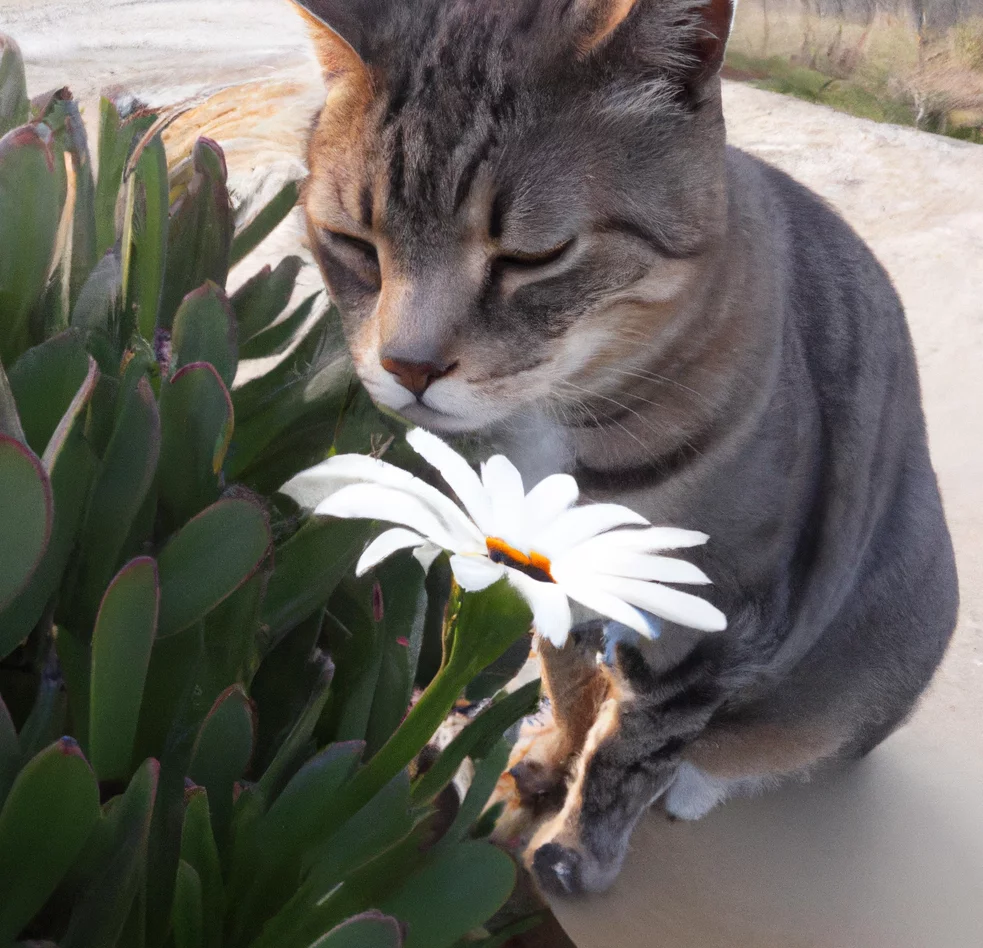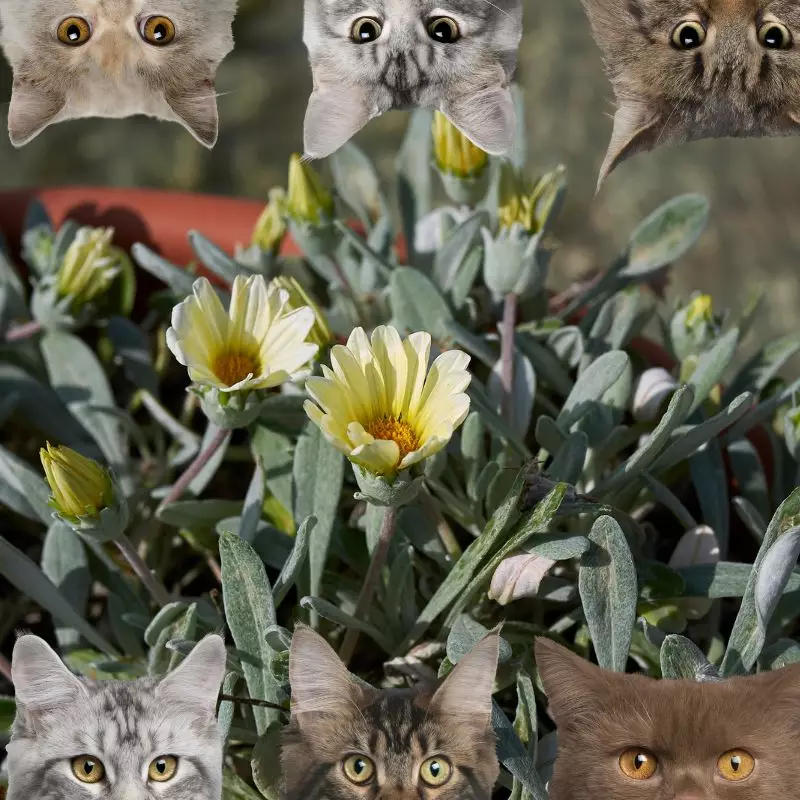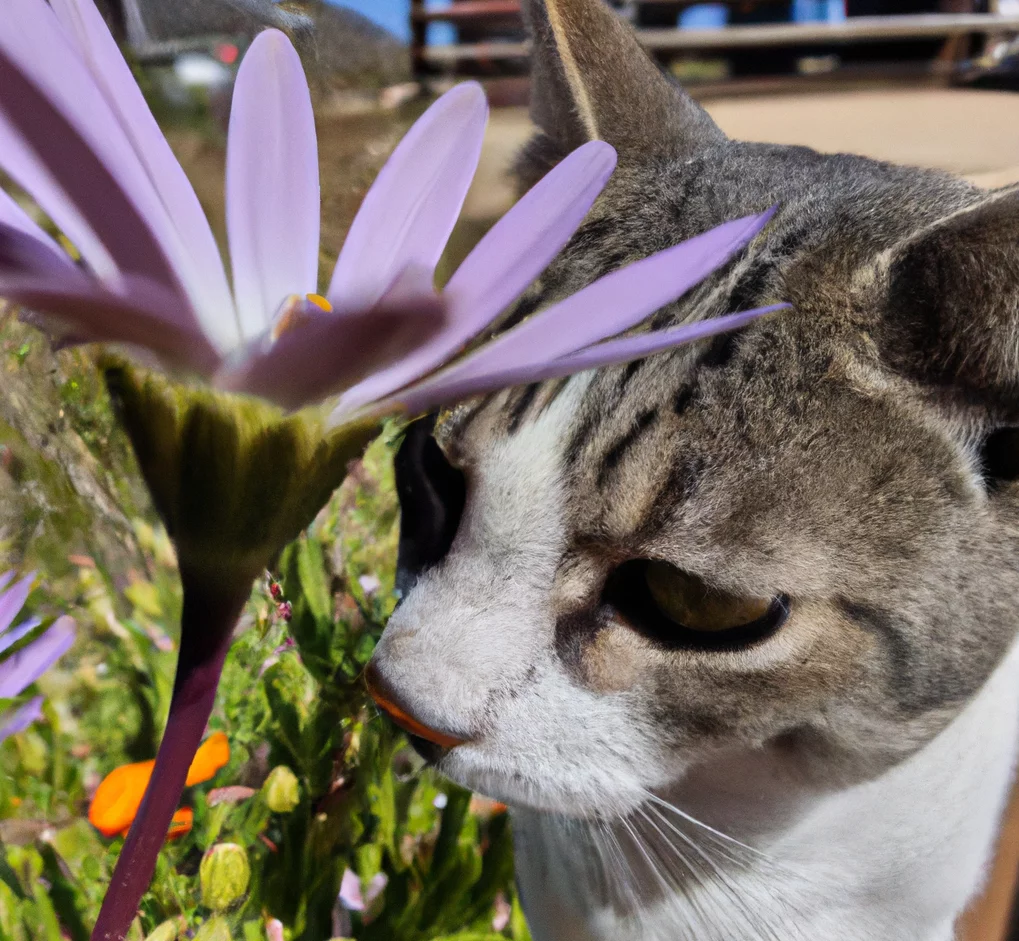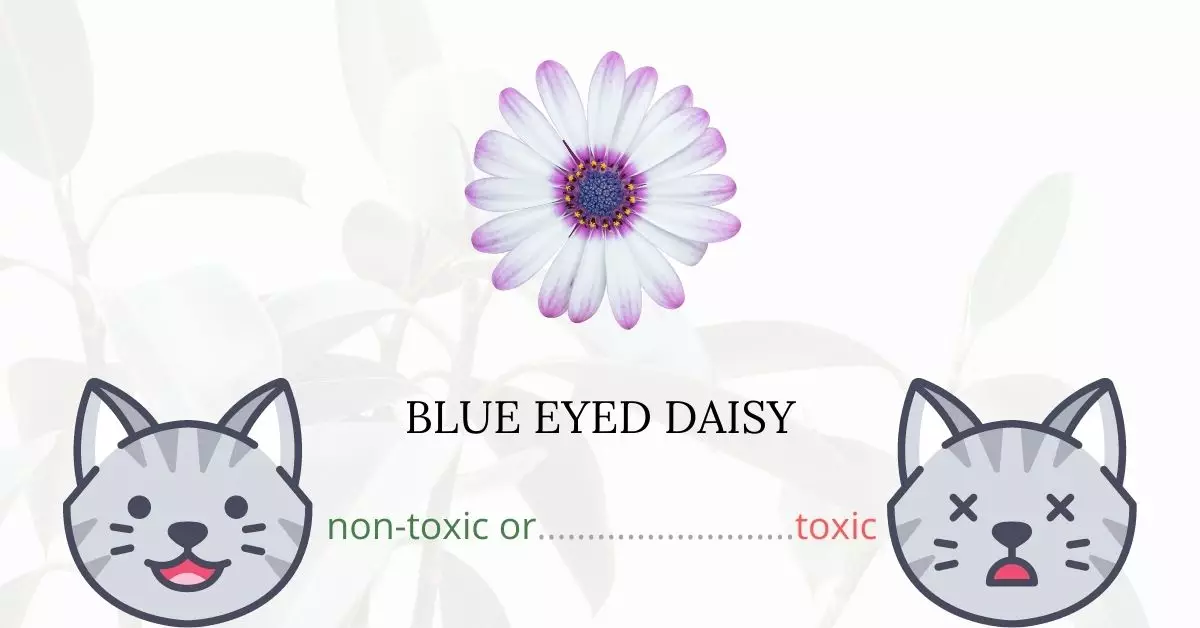Blue-eyed daisies are deemed safe and non-toxic for cats, as verified by the American Society for the Prevention of Cruelty to Animals (ASPCA). Therefore, cat owners can cultivate these beautiful flowers in their gardens or bring bouquets containing blue-eyed daisies into homes where cats reside, without worry. However, it begs the question, will cats find the blue-eyed daisies appealing enough to eat them?
This article was crafted in collaboration with a team of experienced Doctors of Veterinary Medicine (DVMs) to ensure the information provided is accurate, reliable, and up-to-date concerning the potential risks associated with blue-eyed daisies and their effects on cats. This collaboration enables a deeper understanding of the various plants, in this instance, the Blue-Eyed Daisy, and their potential impact on cat health. In addition to the valuable insights provided by our veterinary collaborators, extensive research was also conducted using high-authority websites such as ASPCA and PetMD to confirm the information on every plant discussed, guaranteeing the credibility and reliability of the content provided to the readers.
Can Cats Eat Blue-Eyed Daisy?

If your cat has nibbled or chewed a small portion of blue-eyed daisies, it should not cause you any worry,
There are limited studies about the effects of blue-eyed daisies on cats and there are no documented severe cases and fatalities in cats who have eaten a part of a blue-eyed daisy. However, it is still best to practice caution and not let your cat go near a blue-eyed daisy to prevent them from eating the plant.
Plants are generally not needed in a cat’s diet. Since cats are carnivores in nature, their bodies are not made to digest plant materials. Eating excessive amounts of plants can make a cat sick. It may lead to gastrointestinal problems and symptoms such as mild vomiting and diarrhea among others.
What is Blue-Eyed Daisy?

Arctotis is a flowering plant genus with roughly 50 species with beautiful daisy-like blooms. They are annuals or fragile perennials in the Aster family that are native to Africa. This genus includes blue-eyed daisies.
Blue-eyed daisies or botanically known as Arctotis stoechadifolia, flourish in their natural environment of dunes along the west coast of Cape Province, where they prefer dry weather.
The gray-green leaves of the blue-eyed daisy feature woolly hairs. The beautiful flowers bloom above the leaves on multi-branching stalks. In the spring and summer, the creamy-white blossoms put on a spectacular display. It gets its name from the center of each blossom, which has a steel blue eye with a yellow ring around it. The plant will swiftly spread via seed and roots at stem nodes. It has spread to California and Australia and has already become invasive.
Keeping Cats Away From Blue-Eyed Daisy

Your cat will most likely encounter a blue-eyed daisy outdoors. If you live in an area where blue-eyed daisies are nearby, you should not worry. But, keeping your cats indoors is still the best option to prevent them from consuming these plants.
Engaging your cats indoors by providing them with appropriate toys and using cat houses or cat cages will safeguard them from the dangers outside. Keeping them well-fed is also essential. This will help in minimizing the possibility of cats consuming plants because of starvation.
You may protect your plants in your garden by using natural cat deterrents. Even if your plants are non-toxic, safety measures must be taken. You may also try making plant terrariums to keep your cat away from your plants.
Plants to Avoid For Your Cats
If you are a cat owner and unsure if the plants growing in your yard are harmful to your cats, check out this list of toxic plants for cats. You can also check our list of non-toxic plants for cats.





